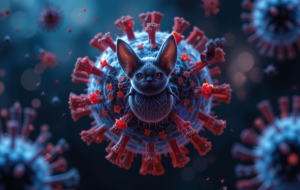Rare Cancer Often Evades Treatments, New Study Offers Hope

Rare Cancer Often Evades Treatments, New Study Offers Hope
A new study published in the journal Nature Cancer provides new insights into why a rare type of cancer called neuroendocrine tumors (NETs) are often resistant to treatments, including immunotherapy. The study, conducted by researchers at Boston Medical Center and Dana-Farber Cancer Institute, is one of the first-ever analyses of NETs at single cell resolution.
NETs are a group of cancers that arise from neuroendocrine cells, which are found throughout the body. These cells release hormones and other signaling molecules that help to regulate various bodily functions. NETs can occur in any organ, but they are most common in the gastrointestinal tract, pancreas, and lung.
NETs are relatively rare, accounting for about 2% of all cancers diagnosed in the United States each year. However, they can be difficult to treat and are associated with a high mortality rate. This is due in part to the fact that NETs are often resistant to standard cancer treatments, such as chemotherapy and radiation therapy.
The new study provides some clues as to why NETs are so resistant to treatments. The researchers found that NETs are highly heterogeneous, meaning that there is a great deal of variation in the genetic and molecular makeup of these tumors. This heterogeneity makes it difficult to develop targeted therapies that are effective against all NETs patients.
The researchers also found that NETs are able to evade the immune system. This is due in part to the fact that NETs produce a variety of immunosuppressive factors, which suppress the activity of T cells and other immune cells. Additionally, the tumor microenvironment of NETs is often hostile to T cells, making it difficult for these immune cells to infiltrate the tumor and kill cancer cells.
The findings of this study could lead to new and more effective treatments for NETs patients. For example, the researchers believe that it may be possible to develop personalized therapies that target the specific genetic and molecular alterations found in each patient’s tumor. Additionally, the researchers are developing new immunotherapy strategies to overcome the immunosuppressive factors produced by NETs and to create a more favorable tumor microenvironment for T cells.
Overall, this study provides a valuable new understanding of the biology of NETs and the mechanisms by which these tumors evade treatments. This knowledge could be used to develop new and more effective therapies for NETs patients in the future.






